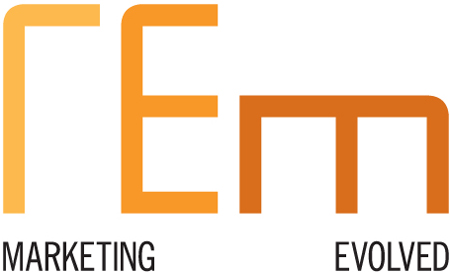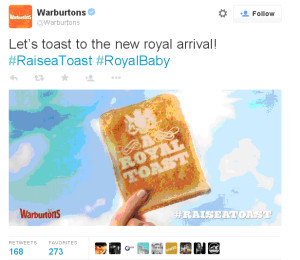Marketers love marketing jargon. As with all forms of jargon it changes with the times and there are always new and exciting, ‘trendy’ even, buzzwords just waiting around the corner. We’ve all been in meetings with terminology flying left, right and centre, and usually, for no apparent need!
Marketing ‘speak’ can often confuse, complicate and essentially make something that’s very simple into something quite complex. Here at REM we’ve compiled a list of the most ‘hip’ marketing buzzwords and trends of the moment and translated into plain speak! We hope you find them useful…
Agile marketing – ever been asked how agile your marketing is. The term agile implies flexibility and agile marketing is quite simply responding to change, rather than following a prescriptive plan, which often requires waiting weeks for sign-off. In this fast-paced digital age, agile marketing can be an important way of reacting to a breaking news story with well-timed content. Speed and flexibility can also give you that competitive edge.
An agile response to the Royal baby news from Warburtons…
Automation – Marketing automation is another hot buzz-word. In simple terms, it’s the use of technology and software platforms that can automate marketing processes, which may otherwise have been performed manually. There are tools that can help schedule postings across social channels e.g. Hootsuite, Buffer. The upper end of automation is when e-tailer’s, such as Amazon, tailor content they market to you based on previous searches, purchases etc
Content marketing – what’s all the fuss about; all marketing collateral has content, doesn’t it? This is true but content marketing is not just about creating content, it’s about creating the right kind of content. Content that’s relevant, engaging and informative to your target audience without just telling them to buy! Content marketing should be educational, informative or even just entertaining in order for it to drive a meaningful customer response.
Customer experience – this basically refers to the relationship a customer has with a business. If you think about all the different ways that ‘you’ as a customer interact with a particular brand or organisation. These multiple interactions over time builds a sort of relationship, between you and the organisation and the result of these interactions can be thought of as the customer experience. For marketers it’s important to make these interactions as personal and memorable as possible, to create the most positive customer experience.
Digital transformation – if you think about the word transformation it might conjure images of butterflies. So now imagine a business as a caterpillar, in order to fly it transforms to a butterfly, and so a business must transform in order to compete in a digital led environment. Whilst digital transformation refers to how a business (all units) must transform, it is often associated with marketing as it’s responsible for driving key digital channels such as, web, social and mobile, etc.
Growth hacking – This is usually associated with more techie or internet based start-ups. Growth hackers main metric is simply growth. Growth hackers use technology to grow their business using social media or viral marketing methods. Technology is often built into a product. Facebook’s people you know or Twitter’s suggestions to follow are both examples of growth hacking. This offer from Achica.com also is a good example; the more friends you invite to join and therefore grow their subscription list – the more rewards you get.
Inbound marketing – The idea with inbound, is simple, the customers come to you, but you have to earn their attention. In contrast with more traditional ‘outbound’ marketing such as telemarketing, unsolicited email marketing, print ads, TV & radio ads etc – marketing messages that are often shouted at the consumer and when they are not really paying attention. Inbound marketing aims to draw you in, it goes hand-in-hand with content marketing. The more interesting the content, the more it will engage and draw in the customer allowing them to ‘find’ you.
Multi-channel – We all use various channels to interact with people on a daily basis – a phonecall, text message, a tweet or in person. Multi-channel refers to marketing that interacts with its audience across a variety of channels, meaning it can reach its target on the medium(s) they prefer. Multi-channel involves a mix of traditional ‘outbound’ marketing and ‘inbound’ marketing. The emphasis of multi-channel marketing is choice – the number of channels available is always increasing and so to reach your audience across all of these channels you have to take a multi-channel approach.
Storytelling – Everyone loves a good story. It’s easier to relate to a good story and you might even care about the characters in the story. Storytelling in marketing is ever increasing in popularity; studies suggest that a story engages our brains much more than cold facts and figures. As brands become more aware of creating an emotive connection to the customer, the use of storytelling can provide a brand with a more memorable narrative. This narrative may still be persuasive but rather than simply telling a consumer to buy a product, it engages on a deeper and so a more ‘relatable’ level.
So that brings us to the end of our round-up. We hope it has helped translate some of the most ‘current’ marketing lingo into plain words. There are of course many others that we’ll have to look at another time. The next wave of buzzwords is also out there, just lining up to be coined and unfortunately, complex terminology will still continue to confuse, but much to the delight of jargon aficionados, it’s here to stay.
If you are interested in finding out how REM could implement a really effective marketing campaign for you, please get in touch, the team here are all plain talking.




Recent Comments